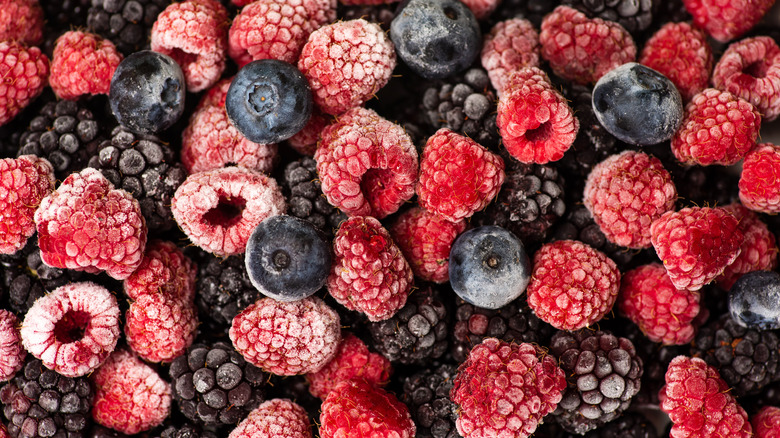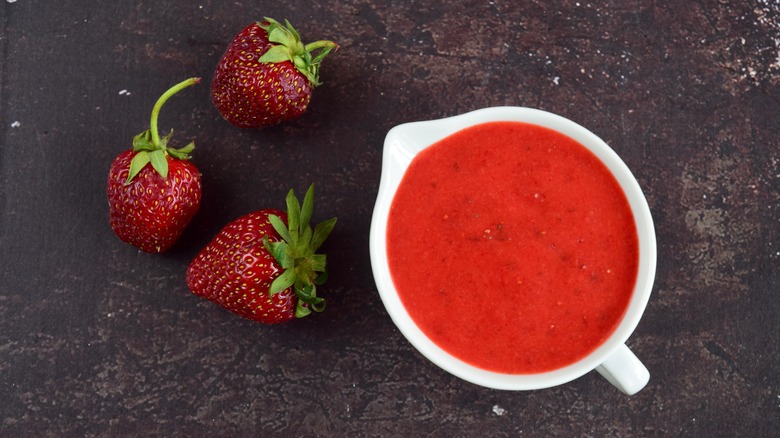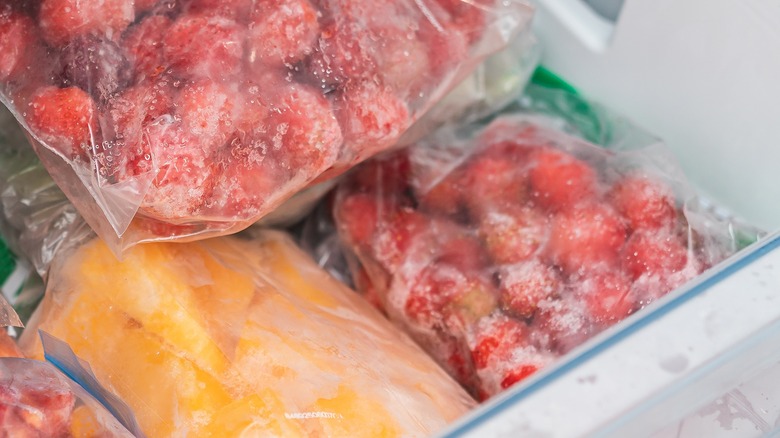Use Up That Leftover Frozen Fruit To Make A Tangy Sweet Salad Dressing
By now most of us know the mantra: We need to eat at least five servings of fruits and vegetables a day to stay healthy. This might be easy in warmer climates where fruits and vegetables are available in abundance all year round, but in cold or temperate climates, this can be a challenge.
Enter, frozen produce. This can be a bit divisive as we have been trained to believe that fresh is best, but a 2016 study conducted by Linshan Li et al., shows that there are very few nutritional differences between fresh and frozen food. In fact, the freezing process (if done correctly) can actually preserve the food with maximum nutritional value.
So, it comes down to taste. If you cannot immediately taste the difference between fresh and frozen fruit, this is good news and all the reason to stock up on frozen fruits — typically berries, mango, or pineapple. The easy way to consume these fruits is simply to thaw them and eat them as-is or blend them in a smoothie. If there is a glut, blitz it to make a tangy-sweet salad dressing. The natural sweetness of these fruits, plus the tanginess from vinegar or acidic fruits, will nicely complement the other salad ingredients.
Leverage that natural sweetness from the fruits
Using leftover frozen fruit to make a dressing is a creative and delicious way to reduce food waste while adding a burst of flavor to salads. Granted, the sweetness from the fruits can be overpowering so the best way to temper it is to blend the fruits with some acidity (e.g. balsamic vinegar or apple cider vinegar) and oil (e.g. olive oil or grapeseed oil) for a balanced vinaigrette or salad dressing. Incorporate additional flavors like honey or basil leaves and blend them until you get a flavor that works for you. Strawberry vinaigrette, in particular, is great on kale or cos lettuce.
While berries and balsamic make a great combo, don't forget the mangoes, which can also be made into salad dressings with similar flavor-building blocks. For example, blend mangoes with sweet chili sauce, neutral-tasting oil, lime juice, and herbs (e.g. coriander, chives) for a tropical-tasting dressing, best paired with grilled prawns or grain bowls. Mangoes are firmer and pulpier than berries, so a mango-based dressing or vinaigrette might be thicker than a berry-based one.
Thaw the fruits carefully before use
Why exactly does frozen fruit taste so sweet, one may wonder suspiciously? This is because commercial food suppliers typically select and flash-freeze fruits that are fully ripened, which is when they are at their height of natural sweetness. Choosing under-ripened fruit will result in a bitter-tasting mix because once the fruit is frozen there is no way it can ripen naturally.
There are some important callouts when it comes to thawing or defrosting frozen fruits. The National Center for Home Food Preservation explains that "as soon as food begins to defrost and become warmer than 40 degrees Fahrenheit, any bacteria that may have been present before freezing can begin to multiply."
The best way to thaw the frozen fruit is to leave it in the fridge for around 6 to 8 hours (for a 1-pound bag) so it can thaw evenly and gradually. The thawed fruits will likely have some excess liquid, but you can use it all in the salad dressing and adjust the other ingredients to get the consistency you want.


